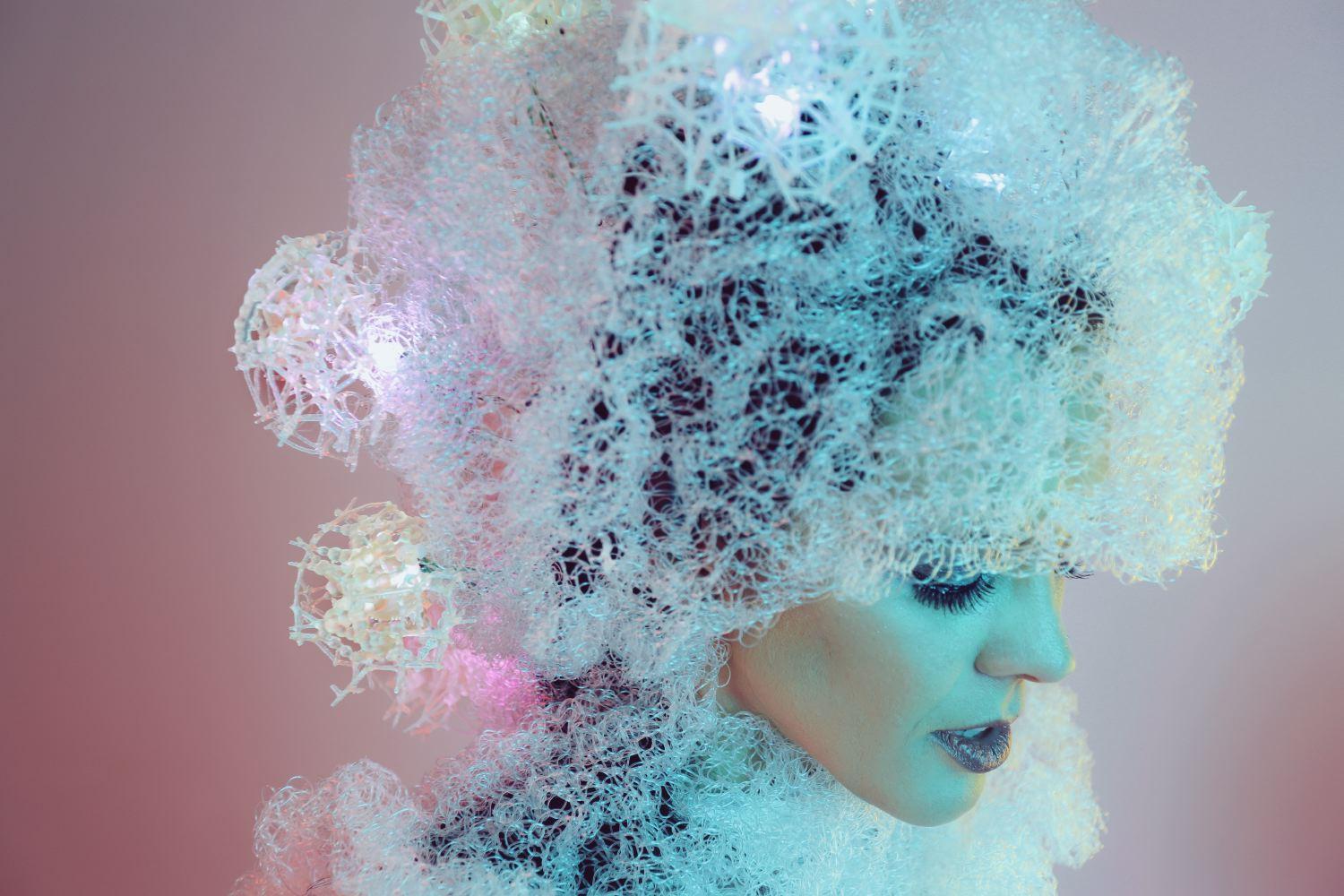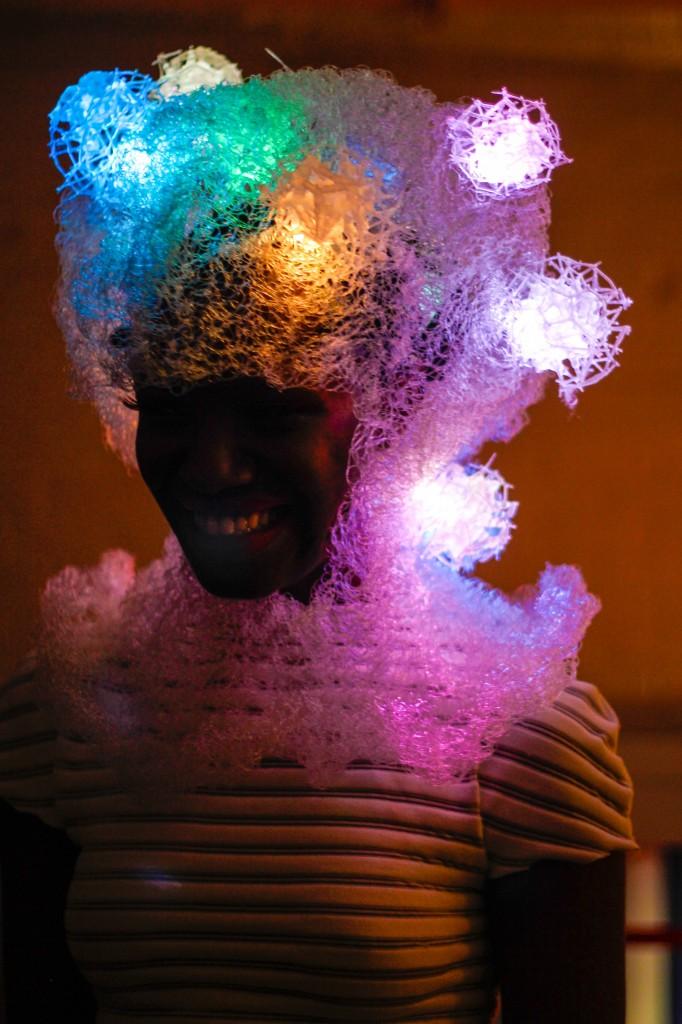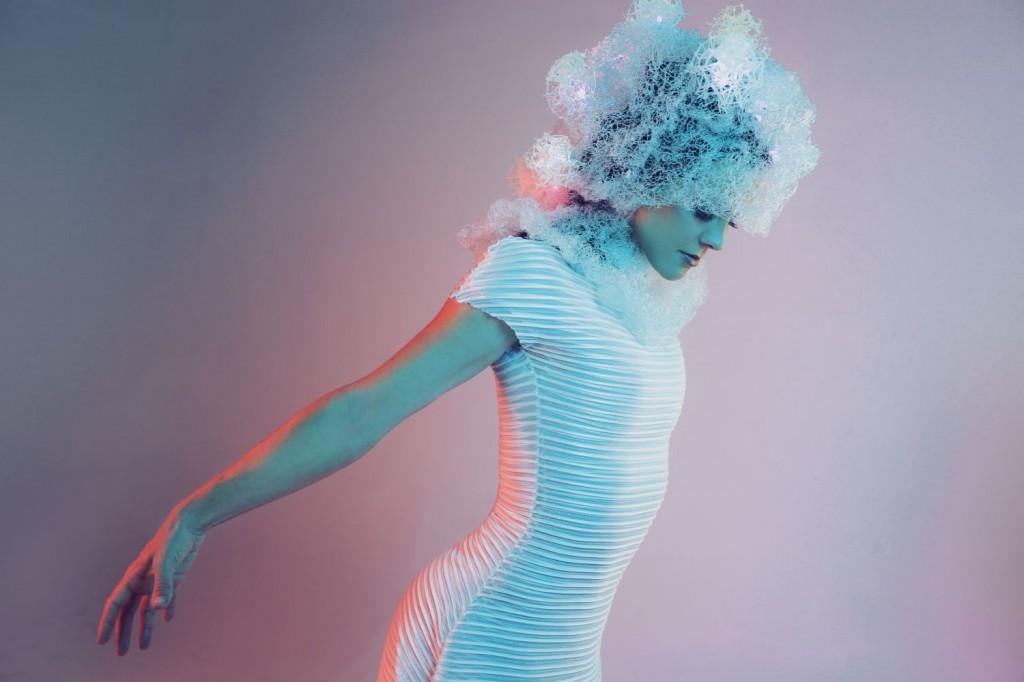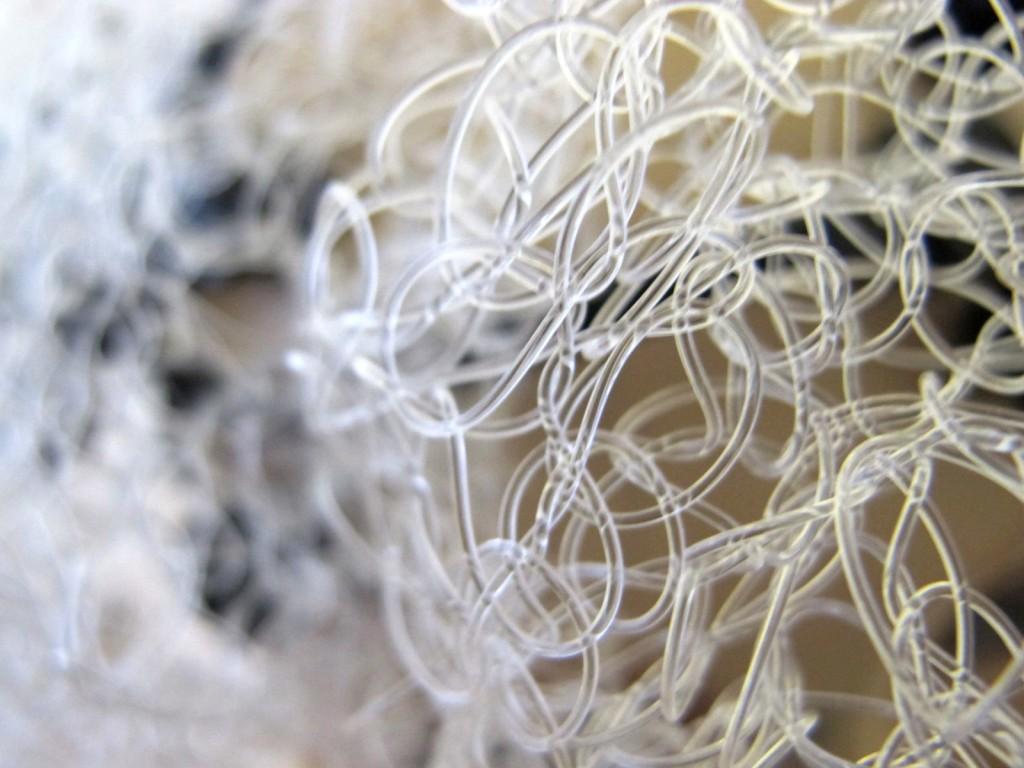Imagine a time in the future when communication is not done through verbal speech, perhaps not even with hand motions or facial expressions. Imagine a time when we can speak to one another, no matter what our native languages are, via signals that our brains send to each other. This may one day be possible, but certainly not anytime in the near future.
One fashion designer, named Kristin Neidlinger, with help from a company called MACHINIC, and colleagues Grant Patterson, and Nathan Tucker, has come up with a very unique headdress (the NEUROTiQ) that has the ability to show onlookers exactly how the wearer’s brain is functioning. While it’s not at the level of telepathic communication by any means, it is certainly a new concept in fashion design.
Neidlinger, the founder of Sensoree, has put several interesting production methods together in the creation of NEUROTiQ, which is fabricated using 14 3D printed synapse-like light points that she calls globules. These globules are equipped with LED lights that respond to 14 Emotiv Epoc EEG brain sensors which are placed in different areas on the wearer’s scalp. The colors that are shown, on these globules represent different states of the brain.
For example, deep sleep is represented by the color red; meditation is orange; consciousness is yellow-green; gamma is shown as blue, purple and red, depending on the exact brain state.

(Image credit: Elena Kulikova)
“I love materials,” Neidlinger told 3DPrint.com. “I am a tactile enthusiast and have always loved the qualities of textures and structures of shape. The NeurotiQ was my first work with 3D printing. It was a grand experiment with materials. Currently, 3D prints are solid objects and it is challenging to find comfort and movement on the body. The fashions are more like armor.”
To make the headdress both comfortable and provide it with more ability to move, Neidlinger combined the technology of 3D printing with that of traditional knitting. The globules were then embedded along with some electronics within a nylon knit, that took approximately 61 hours to create. The 3D printing of the globules was done on a Form 1 3D printer, and took 8-10 hours each to print out. In total, the 3D printing process took 102 hours.
“To make the forms flexible, I thought to combine traditional hand craft of knitting with the new technology of 3D printing,” said Neidlinger. “3D printing offers sculptural detail that is so fantastically intricate. I love the fact that you can dream up any design and make it tangible. The possibilities seem so vast – from designing jewelry to automated space stations, so why not space station jewelry? I am especially fond of working with Formlabs’ Form 1 3D printer. The resolution is so fine and the resin has a nice capture of light. So far we are delighted and cannot wait to see what will happen on the runway!”
This is one of the most creative uses of 3D printing within fashion design that I have seen yet. It should be interesting to see what Neidlinger and Sensoree come up with next. Perhaps space station jewelry? Let us know what you think of this unique headdress in the NeurotiQ forum thread on 3DPB.com.
Subscribe to Our Email Newsletter
Stay up-to-date on all the latest news from the 3D printing industry and receive information and offers from third party vendors.
You May Also Like
Profiling a Construction 3D Printing Pioneer: US Army Corps of Engineers’ Megan Kreiger
The world of construction 3D printing is still so new that the true experts can probably be counted on two hands. Among them is Megan Kreiger, Portfolio Manager of Additive...
US Army Corps of Engineers Taps Lincoln Electric & Eaton for Largest 3D Printed US Civil Works Part
The Soo Locks sit on the US-Canadian border, enabling maritime travel between Lake Superior and Lake Huron, from which ships can reach the rest of the Great Lakes. Crafts carrying...
Construction 3D Printing CEO Reflects on Being Female in Construction
Natalie Wadley, CEO of ChangeMaker3D, could hear the words of her daughter sitting next to her resounding in her head. “Mum, MUM, you’ve won!” Wadley had just won the prestigious...
1Print to Commercialize 3D Printed Coastal Resilience Solutions
1Print, a company that specializes in deploying additive construction (AC) for infrastructure projects, has entered an agreement with the University of Miami (UM) to accelerate commercialization of the SEAHIVE shoreline...

































